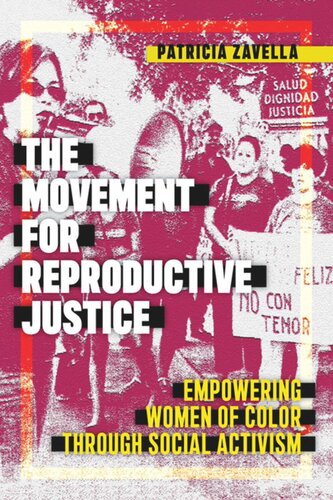

Most ebook files are in PDF format, so you can easily read them using various software such as Foxit Reader or directly on the Google Chrome browser.
Some ebook files are released by publishers in other formats such as .awz, .mobi, .epub, .fb2, etc. You may need to install specific software to read these formats on mobile/PC, such as Calibre.
Please read the tutorial at this link: https://ebookbell.com/faq
We offer FREE conversion to the popular formats you request; however, this may take some time. Therefore, right after payment, please email us, and we will try to provide the service as quickly as possible.
For some exceptional file formats or broken links (if any), please refrain from opening any disputes. Instead, email us first, and we will try to assist within a maximum of 6 hours.
EbookBell Team

4.7
36 reviewsShows how reproductive justice organizations' collaborative work across racial lines provides a compelling model for other groups to successfully influence change
Patricia Zavella experienced firsthand the trials and judgments imposed on a working professional mother of color: her own commitment to academia was questioned during her pregnancy, as she was shamed for having children "too young." And when she finally achieved her professorship, she felt out of place as one of the few female faculty members with children.
These experiences sparked Zavella’s interest in the movement for reproductive justice. In this book, she draws on five years of ethnographic research to explore collaborations among women of color engaged in reproductive justice activism. While there are numerous organizations focused on reproductive justice, most are racially specific, such as the National Asian Pacific American Women's Forum and Black Women for Wellness. Yet Zavella reveals that many of these organizations have built coalitions among themselves, sharing resources and supporting each other through different campaigns and struggles. While the coalitions are often regional—or even national—the organizations themselves remain racially or ethnically specific, presenting unique challenges and opportunities for the women involved.
Zavella argues that these organizations provide a compelling model for negotiating across differences within constituencies. In the context of the war on women's reproductive rights and its disproportionate effect on women of color, and increased legal violence toward immigrants, The Movement for Reproductive Justice demonstrates that a truly intersectional movement built on grassroots organizing, culture shift work, and policy advocating can offer visions of strength, resiliency, and dignity for all.